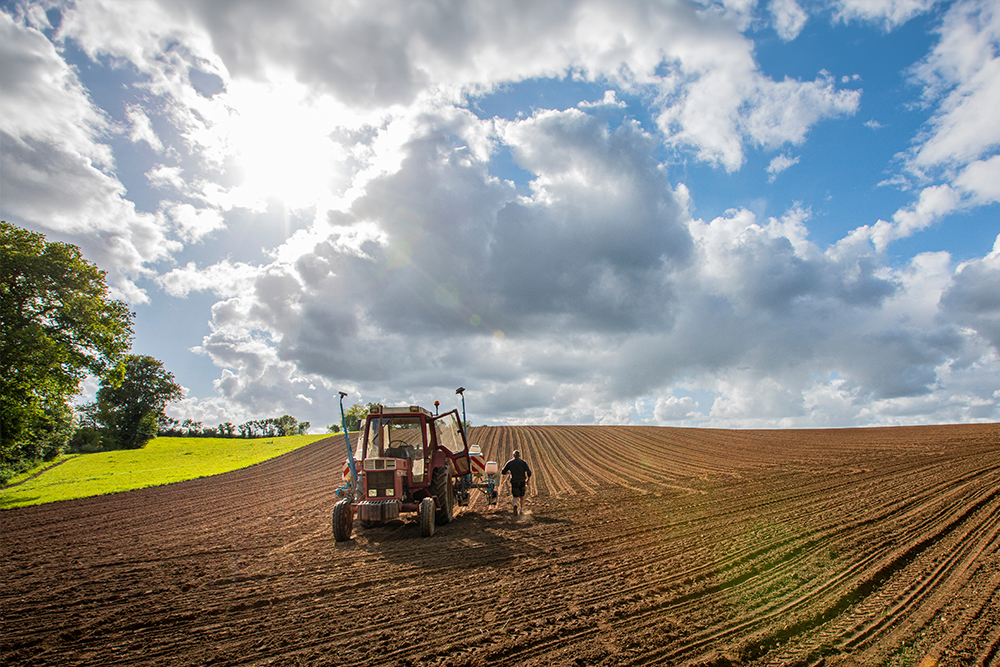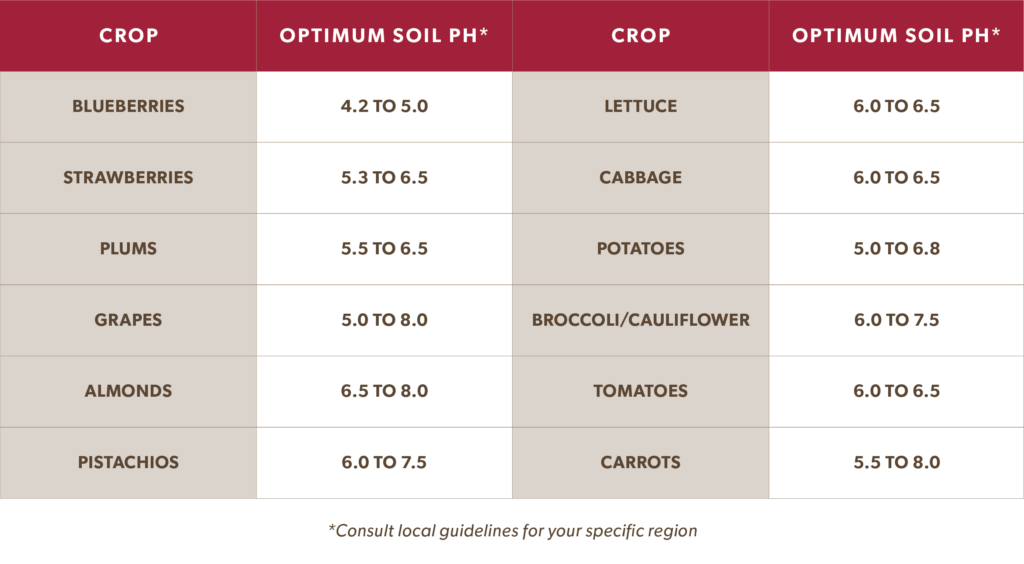Elemental Sulfur Fertilizer in California: Uses and Opportunities

With its warm climate, year-round growing season and extensive irrigation network, California produces over one-third of the vegetables grown in America and two-thirds of the fruit and nuts. In fact, over 400 types of commodities are grown here.
Elemental sulfur fertilizer has become crucial to California’s $55.9 billion agricultural production sector. While it is used primarily to reduce soil pH and reclaim sodic soils, it’s now widely used as a season-long nutritional sulfur source.
Elemental sulfur fertilizer basics
Elemental sulfur (S) is simply sulfur in its natural state (the eighth element on the Periodic Table). It’s not plant-available in its elemental form. First, beneficial microorganisms in the soil must oxidize it into sulfate (SO4). This gradual conversion makes elemental sulfur a season-long sulfur source vs. an immediate sulfur source (more on this below).
One of the most common forms is bentonite sulfur fertilizer: a high-analysis, degradable product made with 10-15% bentonite clay and 85-90% purified S. When moisture is present, the clay swells and expands. This exerts force on the sulfur pastilles, causing it to break down into extremely fine particles. The finer the resulting S particles are, the more readily it can be oxidized by microbes.
Applications for elemental sulfur in California
Reduce soil pH
Soil pH levels in California range between 5.0 to 8.5. There are large areas of farmland with alkaline soil, with pH levels above 7.5. Many crops are most productive when the pH is slightly acidic. Sulfur fertilizers can be used as acid-forming or acidic amendments to replace exchangeable sodium adsorbed on the clay surface.
Bentonite sulfur fertilizer has the advantage of being a high-analysis sulfur source that gradually converts to SO4 throughout the growing season. It’s economical and far less prone to leaching. To balance nutrient demand, it can be used with an immediately available sulfate fertilizer.

Reclaim sodic soils
Sodic soils are a common problem in parts of California. These crusty soils have high levels of exchangeable sodium (Na) and low salt levels. This negatively impacts soil structure and drainage. Sodic soils have high toxicity and can cause nutrient and pH imbalances.
Sulfur products can be used as acid-forming or acidic amendments to replace exchangeable sodium adsorbed on the clay surface. The three options include sulfuric acid, calcium carbonate and elemental sulfur.
Elemental sulfur provides a slower, more gradual change that occurs over several months and extends into subsequent years. One major advantage of this slow and steady approach is that it minimizes loss due to leaching. Not to mention, it is economical and easy to apply.
Provide season-long nutritional sulfur
California has long been a global leader in reducing greenhouse gases and industrial emissions. The flip side is that the removal of sulfur dioxide and particulate sulfur materials has meant that soils are getting less “free” sulfur from atmospheric deposition. This has led to an increase in sulfur-deficient soils (most notably, sandy soils).
To compensate, more and more growers across California are introducing sulfur fertilizer into their fertility strategies. Many are even introducing annual sulfur management plans using bentonite sulfur fertilizer.
Organic production: In California, over 2.13 million acres are dedicated to organic crops. Elemental sulfur is one of the few options for organic growers. Bentonite Sulfur fertilizers such as Keg85S Organic and Keg95S Organic meet organic production requirements.
California crops with a high sulfur demand
Many crops have a high sulfur demand and benefit from sulfur fertilizer. This includes cabbage, broccoli, mustard and turnip greens, radishes (all from the Mustard family) – as well as onions and garlic (from the Allium family). These crops may require between 30 and 40 lbs per acre of sulfur.
It’s no coincidence that these are among the more, how shall we say… pungent crops. That aroma reflects the sulfur! (It also explains why sulfur should be applied sparingly on sweet onions)
Other crops, such as sweet corn, tomatoes, strawberries, and watermelons, are also shown to respond well to nutritional sulfur.
Application timing
California’s year-round growing season provides great flexibility when it comes to applying an elemental bentonite sulfur fertilizer. It can be applied pre-seed/pre-plant, at seeding/planting or post-harvest. It is typically broadcast but can also be applied as a side dress in row crops.
Because it takes time to degrade, bentonite sulfur fertilizer is seed-safe. Optimal oxidation of elemental sulfur occurs when soils are warmest. Moisture is required to activate the clay component… so take this into consideration if you’re not on an irrigation system.
Keys to a top performing product
With elemental sulfur, the most important factor driving performance is particle size. Consistent and complete particle breakdown is key. The smaller the particle size, the more surface area is exposed for microbes to do their thing and convert the S to SO4.
For bentonite sulfur fertilizers, the quality of the clay has a significant impact on degradability. Products that only use premium clay will have superior absorption and swelling characteristics.
For guidance, speak to a crop consultant
If you’re curious about amending your soil or learning if your crops can get a boost from nutritional bentonite sulfur fertilizer, talk with a local retailer or crop consultant who knows your territory and crops.
You can also find a variety of insightful videos, articles and resources at kegriver.com.




